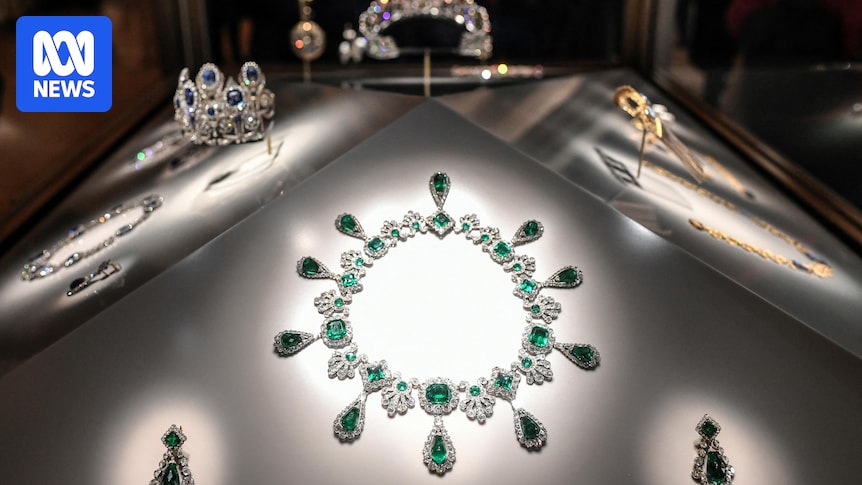
Authorities in Paris are set to charge two men with theft and criminal conspiracy following a daring jewel heist at the Louvre Museum last week. The suspects, who have partially admitted to the charges, were apprehended on Saturday, with one caught attempting to flee to Algeria. Despite their arrest, the stolen treasures, valued at approximately $102 million, remain missing.
Paris prosecutor Laure Beccuau announced that the men, both in their thirties and with prior criminal records, will be brought before magistrates. They face charges of organized theft, which could result in a 15-year prison sentence, and criminal conspiracy, punishable by up to 10 years. “I want to remain hopeful that [the jewels] will be found and they can be brought back to the Louvre, and more broadly to the nation,” Beccuau stated during a press conference.
The Heist: A Bold Operation
The theft, which occurred on the morning of October 19, involved four hooded individuals who used a crane to smash an upstairs window of the Louvre during opening hours. The group, unarmed but equipped with angle grinders, managed to escape on motorbikes after a swift operation lasting merely six to seven minutes. The incident has highlighted significant security lapses at the world’s most-visited museum.
The museum’s surveillance system failed to detect the intruders in time, raising questions about its effectiveness. In response to the breach, some of the Louvre’s most valuable jewels have been transferred to the Bank of France under a secret police escort to ensure their safety, as reported by French radio RTL.
Security and Repercussions
The audacious robbery has sent shockwaves through France, sparking a national debate over security protocols at cultural institutions. The Louvre, a symbol of French heritage and pride, has faced scrutiny for the apparent ease with which the thieves executed their plan. This incident has been described by some as a national humiliation, prompting calls for a thorough review of security measures.
“The museum’s cameras failed to detect the intruders in time to prevent the robbery, which took between six to seven minutes and was carried out by four people who were unarmed, but who threatened the guards with angle grinders.”
Despite the arrests, there is currently no evidence to suggest that the robbery was an inside job, according to prosecutor Beccuau. The investigation continues as authorities work to recover the stolen items and prevent future breaches.
Historical Context and Expert Opinions
The Louvre heist is reminiscent of other high-profile art thefts that have challenged security systems worldwide. In 1990, the Isabella Stewart Gardner Museum in Boston experienced a similar incident, where thieves disguised as police officers stole 13 pieces of art valued at over $500 million. Despite extensive investigations, the artworks remain missing to this day.
Experts in museum security emphasize the need for a balance between accessibility and protection. Dr. Jean-Luc Martinez, a former director of the Louvre, commented, “While museums are public spaces meant for education and enjoyment, they must also invest in cutting-edge security technologies to safeguard invaluable cultural assets.”
Looking Forward: Enhancing Security
In light of the recent events, the Louvre and other museums may need to reevaluate their security strategies. This could involve upgrading surveillance systems, increasing the presence of security personnel, and implementing more stringent access controls. The incident serves as a stark reminder of the vulnerabilities that even the most prestigious institutions can face.
As the investigation unfolds, the art world and the public alike await the recovery of the stolen jewels. The outcome of this case may influence future security policies at museums globally, ensuring that cultural treasures are protected for generations to come.






